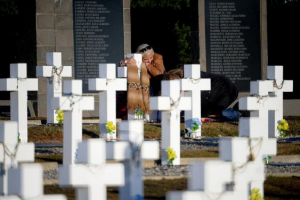PRESS RELEASE - 26 th MARCH 2018
Families of 90 Argentine soldiers visit Malvinas after the identification
The Argentine Secretary for Human Rights, Claudio Avruj, stressed that the identification of 90 Argentine soldiers who died during the Malvinas conflict and were buried at Darwin Cemetery constitutes “the culmination of a long-running demand” and said that the emotional tribute paid to those soldiers today by their relatives “was a celebration of life in its entirety”.
“It has been an enormous act of humanity, I think it serves as an example for all of us, of good practice, of making politics more human”, Avruj commented.
He remarked that “for many years the relatives were calling for a response and were left waiting; 36 years with no intervention from the state, the armed forces or the institutions” and with “the state sticking its head in the sand, ignoring the ever growing pain within each of these families”.
Avruj gave these words at a press conference held at Ezeiza International Airport, upon his return from the Malvinas alongside just under 250 relatives who participated in the ceremony to mark the inscription of plaques to identify the 90 soldiers buried in Darwin Cemetery since 1982.
Also participating in the press conference was the representative of Aeropuertos Argentina 2000, Roberto Curlovich; the head of the Malvinas Relatives Commission, María Araujo, and relatives of the fallen soldiers from the war.
“There is a great deal to learn as we learnt today at Darwin, faced with the most intense pain, that of knowing that a loved one has gone”, Avruj said, and asked that in the wake of this humanitarian occasion, people reflect a little more on what happened on the Malvinas.
He stressed that each and every one of the tributes from the relatives to the fallen soldiers “constituted the greatest and purest act of love that you could witness”.
“Those images of the cemetery bursting with affection will remain forever ingrained in the memories of those of us who were there to see it”, he added.
He stated that the government’s efforts to continue striving to identify the buried bodies marked “unidentified soldier” is the hallmark of “the good practice” of a state policy”.
“It began under the previous government with the gathering of samples. Straight after taking office, in December 2015, in order to carry on with this work we needed samples from many relatives”, he explained.
He said that the work has resulted in “the culmination of a long-running demand that ought never to have been made”, and that “ought to have come from government itself, with a genuine desire to respond at the time”.
“When we concluded the identification stage in December we had identified 88 heroes, and we have since identified two more”, he said.
“We must continue working to gather as many samples as possible in order to gain greater certainty about those that remain unidentified”, Avruj stressed, calling on the relatives who have yet to contribute DNA samples to do so in order to help complete the identification work.
Araujo (sister of Elbio, a soldier from the province of Entre Ríos) meanwhile, said that the ceremony at Darwin “marked the healing of a wound and the beginning of a new phase. It is the start of something new”.
“This experience will remain forever etched in our hearts. We are calling now for many more visits because there are still a great many mothers and fathers on the mainland whose sons are on the Islands”, she stated.
She stressed that “this has all been achieved with a great deal of respect, through peaceful and humanitarian means”.
Link to download photographs covering the visit to the Malvinas Islands, here: https://flic.kr/s/aHskveyvTK
Link to download a video covering the visit: https://we.tl/b1n11JXv5u


